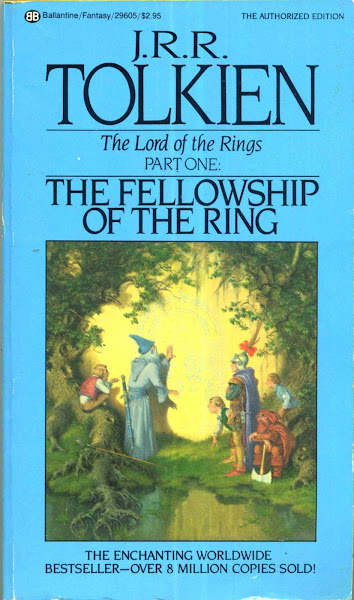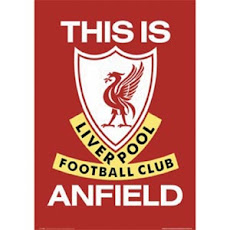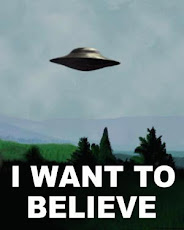This article appears in ateneo.edu
Between the Xs & Os: what ails Ateneo football?
by rick olivares
In 20 short minutes, the high of the new UAAP football season evaporated faster than a drop of water on an oven-hot road.
The first goal of De La Salle quickly erased the smiles of the Ateneo Blue Booters who were hoping to score quickly and hopefully start the news season on a high note. Then 18 minutes later, another goal by the Green Booters drove another stake to the heart of the Ateneans.
Since the team’s final appearance in the UAAP Men’s Football Finals in 2008, the team has been on a downward spiral. They have been hounded by misfortune, poor play, disenchantment, and the loss of key players to academics. In the past two seasons, they barely managed to stave off falling to the bottom of the cellar.
The once proud football program that gave the school five titles in 10 years before the moribund basketball program was resuscitated is now in the Intensive Care Unit.
Striker Anton Amistoso scored before the half and the CPR had to be likewise pulled back. But by the second half, the La Sallians scored three more goals for an embarrassing 5-1 thrashing on our homefield that also put a huge damper on the young season.
And if things couldn’t get any worse, powerhouse University of the Philippines next (after they beat defending champions FEU 2-1), it doesn’t get any easier for the boys in blue.
Long time Blue Booters head coach Arnulfo Merida was at a loss for words over the loss. “Never have seen anything like this in all my years here,” he said as he shook his head.
The problems of the Ateneo Men’s Football Team can be traced to the graduation of those who played on the title squads from 2004-06. There were several players from the title squad who didn’t use up their final year of eligibility (Roger Lastimado and Mickey Ingles), one who migrated (Sam Wilson), and one who was disallowed to play the following season (Alvin Perez). There were remnants to carry the Blue Booters and they did so by reaching the title game in 2008 where they fell in two matches to FEU.
Theoretically, the newbies were given the chance to step up without the veterans as evidenced by RS Mantos winning goalkeeper of the year and Miguel Tuason named Rookie of the Year in 2008. But the team never got into a groove after that.
Mantos was disallowed to play after problems with academics, Gerard Cancio got injured after one game two years ago and it ruined an entire season, Tuason also went out with a torn ACL, striker Kurt Alvarez sat out a year, Francis Mendoza had health concerns, and worse the team lost several players in succession to academics – defender Jerome Reyes, midfielder Miko Manglapus, and all-around player Ale Rivera.
Every year a team is supposed to grow in terms of experience and skill, but the absence of key players stunted their personal growth as well as the team’s strength and balance. The slow build-up to an attack just doesn't take place on the pitch but also off the field for the team's chemistry and strength for years to come.
In the meantime, the recruitment well dried up.
Ateneo football for the most part has largely been homegrown driven. The teams that went to the finals for four straight years from 1996-99 were all Ateneo High School-based. The new millennium saw the champion teams with a core that went through the Ateneo Grade School and High School were aided and abetted by a few choice recruits like Mark Villon from San Beda, Aries Bocalan from Benguet State University, Zaldy Marañon from West Negros, Peter Mortillero from the University of Mindanao, Jerwin Belina from the Polytechnic University of the Philippines, and JP Merida from Romblon.
The UAAP disallowed the recruitment of masteral students (who can only play for two years) unless they had played their college ball in the same school. As such, the only recent Ateneo players to have played more than two years were Bocalan, Merida, and RS Mantos.
But after 2006, the last big recruit to come out from the provinces and to play long years was goalkeeper Mantos who was from Davao. Since then, the Ateneo teams were largely Manileño based including this current edition of Blue Booters.
There are several theories abound why the current Ateneo teams have not played as well as their predecessors.
One is that there is that lack of homegrown pride because the current batch doesn’t have that Ateneo pride. That is a fallacy. If one were to look at the current batch of De La Salle players, how many of them came from Zobel or even Greenhills? Two? That didn’t stop them from playing their hearts out to nearly bag a finals berth last season or in their opening day thrashing of Ateneo this Season 73? Ditto with the University of the Philippines. They have players from La Salle Greenhills, Ghana, Claret, Southridge, and from other far-flung places in the Philippines.
A second is that that the Manileños aren’t as skilled as their provincial counterparts. While there is no doubt that sports are closer to a way of life in the provinces as there are less pursuits or distractions (depending on how one may view it), it doesn’t mean that they necessarily better. The Ateneo three-peat teams were laden with homegrown stars. The recent UP champion team had Manila-based stars like Andoni Santos and Jed Rances. The only wholly provincial teams are FEU and UE. The previous UST champion team was a mixture of both Manilans and provincial recruits.
A third is that the 4-2-3-1 system that Ateneo runs doesn’t work anymore. In my opinion, this might be true.
Some will argue that it is a defensive system that lends to “ugly” football such as the Real Madrid employed in 2006-07 that eventually resulted in Fabio Capello’s dismissal despite winning the crown. That “defensive” argument is a fallacy as well. Germany’s Bayer Leverkusen and Argentina’s River Plate run that formation with a more offensive-minded scheme. The latter squad not only won the domestic title but also led the league in scoring chances.
The system is predicated on ball possession and control which is the current Spanish system (that was derived from the Dutch). Discombobulating the middle third will throw a monkey wrench into the attack and put them on the defensive. The short game of Ateneo has been stopped and the lack of a strong striker to finish off those crosses or sorties has put a lot of pressure on the midfielders. One can look to Italian club AS Roma’s fortunes as forward Francesco Totti got older and Mancini departed from the club. From a consistent challenger to the Italian Serie A title, Roma began to slide down.
In Ateneo’s case, life has been difficult for striker Anton Amistoso. In three years playing for the blue and white, he’s scored two goals in UAAP competition. That’s one goal per 10.5 matches. Obviously a poor rate. In the pre-season, especially in his rookie year, he was a beast on offense as he would bump and fight the more experienced military teams upfront for a score.
The pre and post-season leagues are obviously different from the UAAP tournament. Stakes are higher and the competition is higher. From Amistoso’s woes to the team’s predicament, the problem can be said to be mental. The team may not be mentally tough but in football, a team’s fortunes can change with one good game where everyone fires on all cylinders.
Another is that some say the problem is the coach. That might be true and then again it might not be so. After the title loss of 2008, many said that Ateneo would have won that second game had Arnulfo Merida been on the bench. He was suspended for that match and unable to sit on the bench. What has changed in two year’s time?
Some will say that he is an excellent tactician yet a poor motivator. For those players who were under the late Chris Monfort, they will say that he was an excellent motivator yet not that great a tactician. Far Eastern University head coach Adolfo Alicante was on the hot seat a few years ago but his side has won two UAAP football titles. This despite him being what insiders label as “too nice a coach”. Not everyone can be a Jose Mourinho or Arsene Wenger.
The painful 5-1 beating from La Salle aside and their massive recruitment program, the last time the Green Booters won the title was in 1998. Since then, Ateneo has made the finals five times and won four titles including its 2006 crown over the Taft rivals.
Merida’s system is as only good as his players. Does that mean he should change the system to suit the talent he has?
Being a good high school player doesn’t mean one will shine in college. The level of play is far different as are the players who compete in them. The Ateneo back four, despite their staunch fighting hearts led by Mar Marcelo, is much smaller than most of their counterparts. Two years ago, UST would play the high ball so their taller forwards could outjump them for the header.
Coaches are loathe to abandon the systems they run. But the answer there is to recruit players to fit that system. With the football program unable to recruit and for some players unable to stay in school, it falls upon the program head and the University Athletics Program to stem the ill tide. Three scholarships are only available for this team. Seriously.
The downfall of the Ateneo football program is a bit of everything. But pointing fingers aside and trying to determine what is wrong, hasn’t it occurred to anyone that everyone else just got better?
------------------
When someone tells me that there is not enough motivation to play, my answer to that is - if putting on that blue and white jersey with "Ateneo" in front is not sufficient enough then I suggest you take it off and take a hike.
------------------
When someone tells me that there is not enough motivation to play, my answer to that is - if putting on that blue and white jersey with "Ateneo" in front is not sufficient enough then I suggest you take it off and take a hike.










Sir Rick..
ReplyDeletegreat article about this...i've been following Ateneo football..even when Loyola played for the UFL.
the downside of the football program is in lack of heavy recruiting..especially on provinces where there is the core of most players..ignoring provincial prospects and also the rise of the basketball teams is one of the causes of the meltdown of the program..with Nonoy Baclao switched from being a GK(goalkeeper) way back when he was in West Negros to a converted power forward, i can see that it's almost on the free fall downwards..
there are so many players waiting to be tapped..even here in Cavite, there are many good players here in High School level, such as from PCU, Perpetual Molino, Statefields, Dasmariñas National High School..but the Filipino mentality of football being the game of the elite denies them...but with continuing rise of the Azkals, our national team, I hope every Filipino (or not all of them) change their Americanized perspective..
When someone tells me that there is not enough motivation to play, my answer to that is - if putting on that blue and white jersey with "Ateneo" in front is not sufficient enough then I suggest you take it off and take a hike. - I agree 100%! To represent one's school is an honor.
ReplyDelete